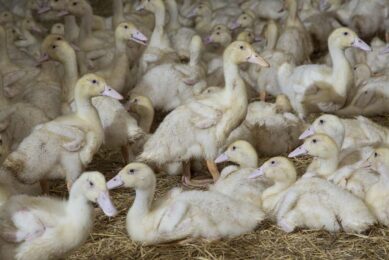Taiwan struggling to contain multi-strain AI outbreaks

Taiwan has reported more than 100 avian flu outbreaks of three different subtypes, affecting hundreds of thousands of poultry across the country.
In a report to the World Organization for animal Health (OIE), Taiwan officials said 108 waterfowl farms were struck by HPAI H5N8 outbreaks. The farms are in Changhua, Yunlin, Chiayi, and Pingtung counties and the cities of Tainan, Kaohsiung, and Taichung. Officials said 52 of the farms also were affected by HPAI H5N2 viruses.
There were 56,178 H5N8 cases, with 56,075 deaths, among 365,591 susceptible birds. Plans call for destroying all the surviving birds to stop the outbreak; more than 92,000 had been culled at the time of the report.
Movement restrictions have been imposed at the affected farms, which will be cleaned and disinfected after culling is completed, the report said. Farms within 3 kilometers of the outbreak sites will be under surveillance for 3 months.
In a separate OIE report, Taiwan officials informed about H5N2 outbreaks on 86 poultry farms in six of the same areas hit by H5N8: Changhua, Yunlin, Chiayi, and Pingtung counties and the cities of Taichung and Tainan.
The virus infected and killed 102,260 of 639,304 susceptible birds, officials said. About 102,000 of the surviving birds have already been culled, and the rest will be destroyed as well. Other planned response measures will be the same as for the farms hit by H5N8.
And in a third OIE report, Taiwan officials said HPAI H5N3 surfaced at three goose farms in Pingtung county. Two of these were also affected by H5N2 outbreaks. The report said the virus killed 4,311 of 11,200 susceptible geese, and plans call for culling the rest and implementing other response measures like those in the H5N8 outbreaks.
Taiwan’s Centre for Disease Control has once again emphasised that the H5N2 and H5N8 viruses are currently still limited to transmission among poultry and no bird-to-human transmission has occurred.
Source: CIDRAP
Join 31,000+ subscribers
Subscribe to our newsletter to stay updated about all the need-to-know content in the poultry sector, three times a week. Beheer
Beheer








 WP Admin
WP Admin  Bewerk bericht
Bewerk bericht